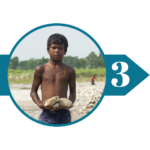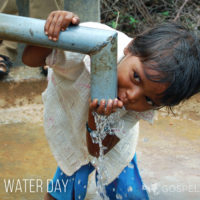WILLS POINT, TX – Gospel for Asia (GFA) issues an extensive Special Report on child labor: Millions of Children Trapped between Extreme Poverty and the Profits of Others
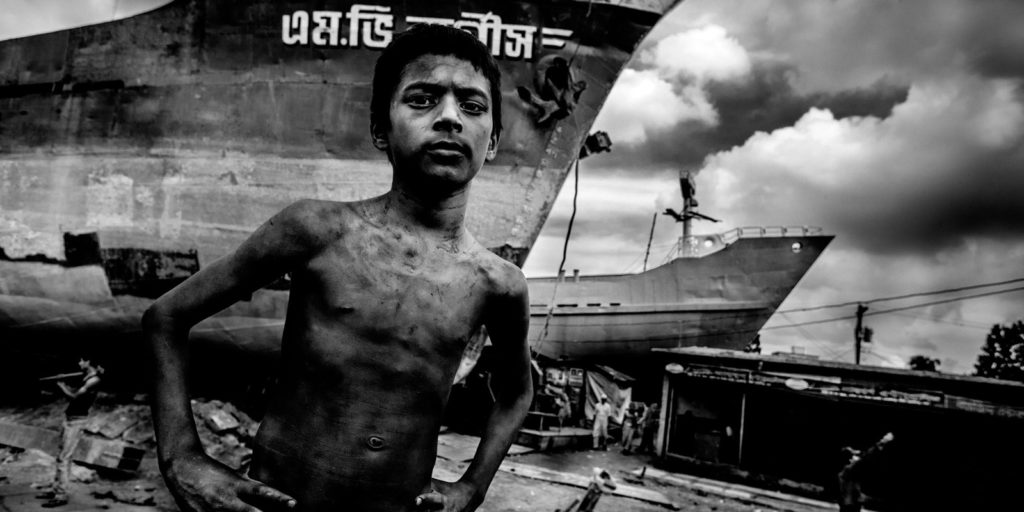
In a report written by Lee Tucker, a consultant to Human Rights Watch, about the problem of bonded labor in Asia, a young girl shared,
“My sister is 10 years old. Every morning at 7:00 she goes to the bonded-labor man, and every night at 9:00 she comes home. He treats her badly. He hits her if he thinks she is working slowly, or if she talks to the other children, he yells at her. He comes looking for her if she is sick and cannot go to work. I feel this is very difficult for her.
“I don’t care about school or playing. I don’t care about any of that. All I want is to bring my sister home from the bonded-labor man. For 600 rupees I can bring her home. That is our only chance to get her back.
“We don’t have 600 rupees … we will never have 600 rupees [the equivalent of U.S. $17 at the time of writing].”
Global Overview of Child Labor Today
These girls’ story is heart-breaking.
It is unthinkable that a child would be subject to such mistreatment.
It is deplorable that stories like this are all too common among the most poverty-stricken portions of the world.
It is beyond despicable that an estimated 218 million children as young as 5 years old are employed, and that at least 152 million are in forced child labor, according to basic facts about child labor published by the Child labor Coalition.
The facts also reveal several other startling realities about child labor. Among them:
- Children under the age of 12 perform up to a fourth of all hazardous child labor.
- Almost half of all forced child laborers are between the ages of 5 and 11.
- More than 134 million children in forced labor are in Africa and the region of Asia and the Pacific.
Top ten worst countries for child labor
as listed by the Maplecroft Child labor Index4
1
BANGLADESH
garment factories, farming, manufacturing
2
CHAD
agriculture, military
3
THE DEMOCRATIC REPUBLIC OF THE CONGO
mining, agriculture, industry, military
4
ETHIOPIA
mining, vending, shoe shining
5
INDIA
mining, agriculture, garment factories
6
LIBERIA
hazardous farming conditions
7
MYANMAR
agriculture, construction, small-scale industry
8
NIGERIA
agriculture, street begging, mining, construction
9
PAKISTAN
agriculture, garbage scavenging, carpet weaving, coal mining, brick kilns
10
SOMALIA
fishing, threshing, construction, hawking, begging
Although some participation in child labor can be quantified—such as in Nigeria where more than 15 million children are estimated to be child laborers—one of the overriding problems with looking at the issue from a global or even a national level is that it is generally agreed “that census data is likely to underestimate the scale of child labor.”
In areas where national regulations mandate education for children within certain age ranges, the threat of legal consequences likely deters complete reporting of child labor. Census data typically only includes children living within a family household. Children who are orphaned, or living on the streets may go undetected, even when it is those children who may be in greatest danger of child labor. It is, therefore, expected that the occurrence of child labor is higher than reports reveal.
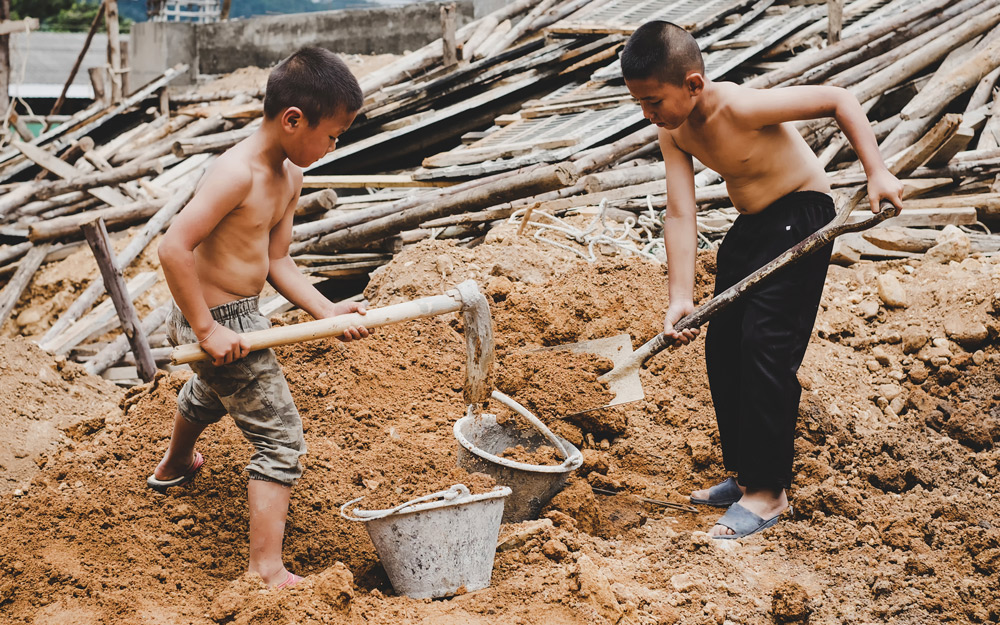
What Is a Fitting Child Labor Definition?
It is important to recognize the prevalence of child labor in order to gain a realistic perspective on how pervasive it is. We need to understand the generally accepted definitions of child labor. Only then can we comprehend the often-irreparable physical and emotional damage inflicted on children, both presently and in their future.
Some child labor is innocuous and, in fact, may generally be regarded as positive. The International Labor Organization recognizes that activities such as doing chores around the home, “assisting in a family business or earning pocket money outside school hours and during school holidays” can “contribute to children’s development and… provide them with skills and experience… that prepare them to be productive members of society during their adult life.” Therefore, these activities are not officially considered to be child labor.
The ILO further defines child labor as “work that deprives children of their childhood, their potential and their dignity, and that is harmful to physical and mental development.”
International law divides child labor into three categories:
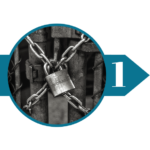 “The unconditional worst forms of child labor… defined as slavery, trafficking, debt bondage and other forms of forced labor, forced recruitment of children for use in armed conflict, prostitution and pornography, and illicit activities.
“The unconditional worst forms of child labor… defined as slavery, trafficking, debt bondage and other forms of forced labor, forced recruitment of children for use in armed conflict, prostitution and pornography, and illicit activities.
 “Labor performed by a child who is under the minimum age specified for that kind of work (as defined by national legislation, in accordance with accepted international standards), and that is thus likely to impede the child’s education and full development.
“Labor performed by a child who is under the minimum age specified for that kind of work (as defined by national legislation, in accordance with accepted international standards), and that is thus likely to impede the child’s education and full development.
Notwithstanding a few reasonable exceptions, the ILO Convention Concerning Minimum Age for Admission to Employment (C138) adopted in 1973 states that:
“Each Member which ratifies this Convention shall specify…a minimum age for admission to employment or work within its territory [that] no one under that age shall be admitted to employment or work in any occupation. …The minimum age specified…shall not be less than the age of completion of compulsory schooling and, in any case, shall not be less than 15 years.”
Similarly, ILO Convention 182 adopted in 2000 defines the worst forms of child labor as:
- “All forms of slavery or practices similar to slavery, such as the sale or trafficking of children, debt bondage and serfdom, or forced or compulsory labor, including forced or compulsory recruitment of children for use in armed conflict;
- “the use, procuring, or offering of a child for prostitution, for the production of pornography or for pornographic performances;
- “the use, procuring or offering of a child for illicit activities, in particular, for the production and trafficking of drugs …;
- “work which, by its nature or the circumstances in which it is carried out, is likely to harm the health, safety or morals of children.”
Finally, forced labor is defined by ILO Convention 29 adopted in 1930 as “all work or service exacted from any person under the menace of any penalty and for which the said person has not offered himself voluntarily.”
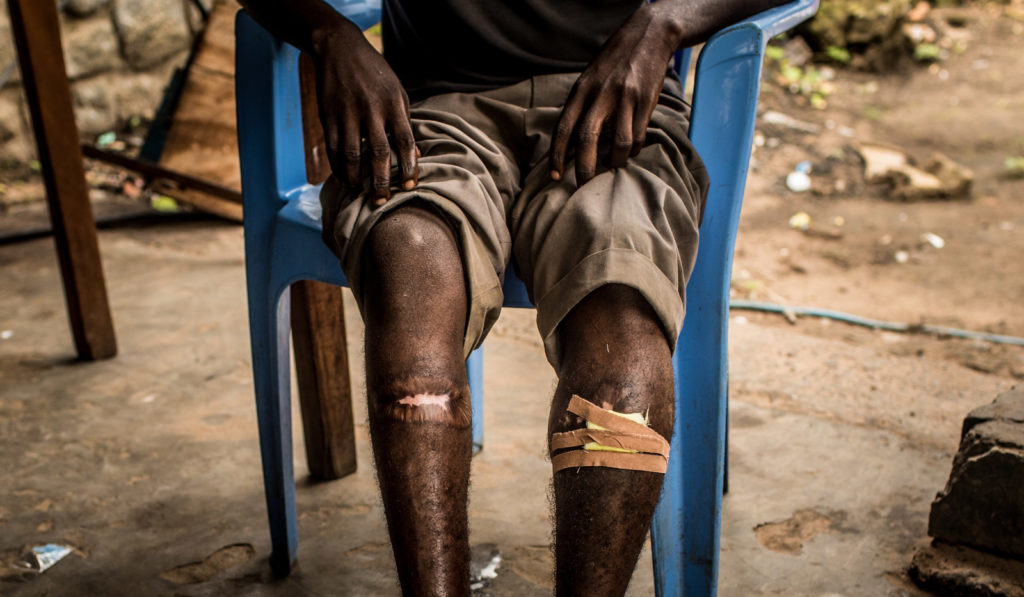
Harmful Effects on Child Laborers
Childhood is an essential, formative time of life—one which many child laborers must leave too quickly. Their lives may long bear the physical, emotional and physiological consequences of their early adulthood. Many child laborers, regardless of whether they are considered forced or not, lack the chance of acquiring the knowledge and skills necessary to extract themselves from the poverty they were born or thrust into by circumstances. Many enter adulthood with no means of securing a better life and with few options for jobs, which extends the continuum of generational poverty to their own children.
In an article by Voice of America concerning child labor, ILO Director-General, Guy Ryder, said, “Honestly, the annual toll is appalling—2.78 million work-related deaths, 374 million injuries and illnesses. If these were the victims of a war, we would be talking a lot about it. Children and young workers are at greater risk and suffer disproportionately and with longer lasting consequences.”
A World Bank report estimated that 10 percent of all work-related injuries child laborers experience are crushing accidents, amputations and fractures.
Annual Toll of Child Labor:
2.78 million work related deaths
— 374 million injuries and illnesses
World Vision reported the story of Jean, an 8-year-old boy who worked in a mine alongside his mother in the Democratic Republic of the Congo, (DRC) where 40 percent of artisanal mine workers are children. He said he had developed a number of physical problems since working in the mines. Children in the mine are susceptible to falling down shafts, being trapped in collapsed tunnels or drowning. Children working in the mine reported having seen other children die at the site. Two-thirds had developed persistent coughs, while 87 percent had been injured or were suffering from body pain. Some girls reported genital infections from working in waist-deep acidic water.
Mired in Mining
He typically hoists a sack of as much as 22 pounds of cobalt up and out of the pit, then carries it on his back for an hour to a trading depot where he sells it to one of the Chinese trading companies who dominate the market in the area.
On a good day, the teenager can earn as much as $9 before making the long walk home.
Cobalt is key to the DRC’s economy—it produces an estimated 65 percent of the world’s cobalt supply—but child labor is rampant in its mining industry. The same Fortune story said, “While it is impossible to know how many underage miners there are, Congolese activists working to end child labor say… there are about 10,000 of them.
A National Bureau of Economic Research on child labor found that “most child labor occurs in countries with extremely low per capita GDP and that per capita GDP (and its square) explains 80 percent of the worldwide cross-country variation in child labor.” The GDP per capita for the DRC was $439 in 2017, in contrast to the GDP per capita for the USA in 2017, which was $59,531.
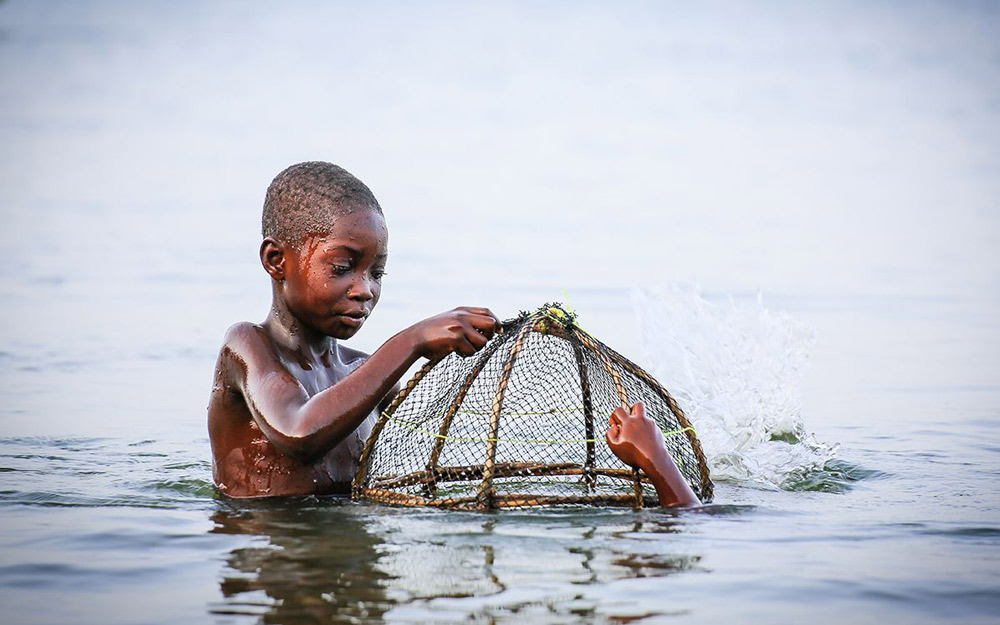
Enslaved in Fishing
“Workers at sea are among the world’s most vulnerable,” according to the U.S. Department of Labor. Various factors, such as working in international waters, produce gaps in applicable laws leaving workers without adequate labor protections in countries like Honduras, Philippines, Bangladesh, Ghana, Haiti, Cambodia, Indonesia and Thailand.
“I started my working life early. My parents had 12 children, none of whom were educated. By the time I was six years old, I was the only person my father could control. All the others were older and most of them had already been given away to work. As the youngest, I was the only one still available. My father saw the opportunity and gave me away for fishing work. The way it works is that the person who takes charge of you now has control over you.
I was first trafficked with five other children. Out of the six of us, three lived, and three did not. I saw many children die from either abuse or the rigorous work they were obliged to do.
There, I was forced to work excruciating hours catching fish on Lake Volta. On a daily basis, my day started at 3 a.m. and ended at 8 p.m. It was full of physically demanding work. I was usually fed once a day and would regularly contract painful diseases which were never treated as I was denied access to medical care. If I asked for even the smallest concession from my boss, I was beaten. Despite all my hard work, I was often not allowed to sleep because I had to take care of all the other tasks, such as mending nets and cleaning fish.”
It took James seven years to escape his slavery.
Surrounded by Tobacco
Investigations by Human Rights Watch found consistent, significant risks to children’s health and safety who are working on tobacco farms in Zimbabwe, the United States and Indonesia. The children are exposed to nicotine and toxic pesticides. Every child interviewed described having illnesses with specific symptoms associated with acute nicotine poisoning and pesticide exposure, including nausea, vomiting, loss of appetite, headaches, dizziness, irritation and difficulty breathing.
Ironically, it is still legal in the United States for children as young as 12 to work on tobacco farms, as long as they have parental permission. There are no age limitations for children who work on small, family-owned farms.
A 2018 special series on NPR’s “Here & Now” reported finding children as young as 7 working during the picking season in North Carolina where tobacco farming is regarded as a legacy.
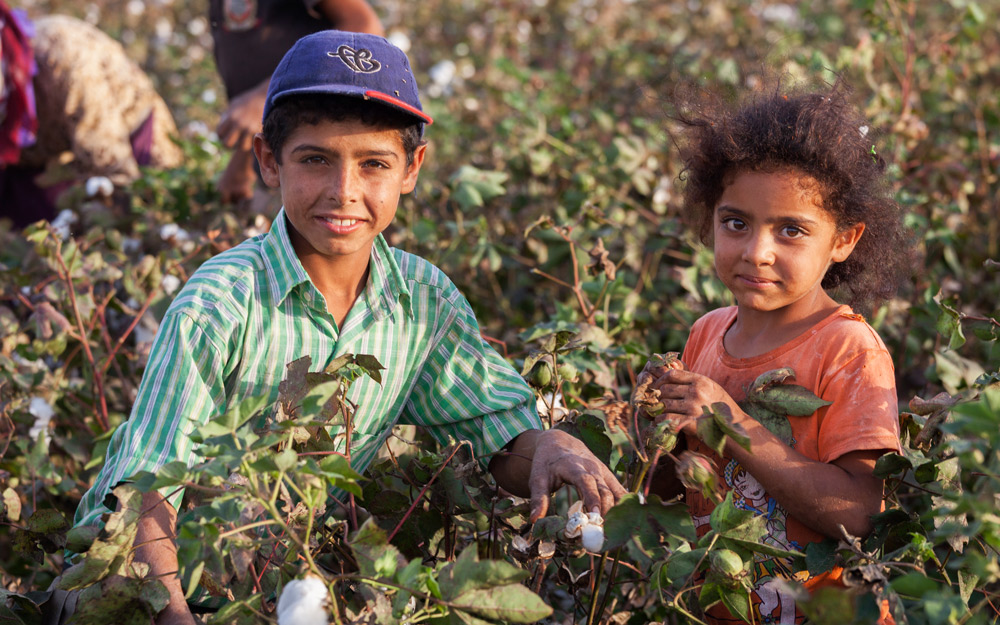
Hemmed in by Cotton, Clothing and Chocolate
Cotton is the best-selling fiber in the world, making the cotton market very appealing.
But according to a New Lanark article, “Children & Cotton”, child laborers in cotton fields and factories may work for up to 12 hours a day, seven days a week during the harvest period for less than $1.50 a day. The article further states, “Without the child workers, the landowners wouldn’t manage to harvest all of their crops.” In some countries, including Uzbekistan, Tajikistan, Kyrgyzstan and China, child labor in cotton fields is actually sanctioned by the government.
Bithi is a 15-year-old girl in Bangladesh. She began working in a garment factory in the capital city of Dhaka when she was 12. Her job was sewing pockets for designer blue jeans that will be sold “in affluent countries.”
Sewing blue jeans may not seem like a burdensome task, but it becomes one when her production quota is 60 pockets per hour, every hour, every day she works. That’s 480 pockets over an eight-hour shift. For this, she earns the equivalent of about $1.00 a day.
The Food Empowerment Project investigated the cocoa industry, where the supply chain for major chocolate manufacturers begins. Their findings read:
“On average, cocoa farmers earn less than $2 per day, an income below the poverty line. As a result, they often resort to the use of child labor to keep their prices competitive. … Often, traffickers abduct the young children from small villages in neighboring African countries, such as Burkina Faso and Mali, two of the poorest countries in the world. Once they have been taken to the cocoa farms, the children may not see their families for years, if ever. … Some of the children use chainsaws to clear the forests. Other children climb the cocoa trees to cut bean pods using a machete. …
“The farm owners using child labor usually provide the children with the cheapest food available, such as corn paste and bananas. In some cases, the children sleep on wooden planks in small windowless buildings with no access to clean water or sanitary bathrooms. … Former cocoa slave Aly Diabate told reporters, ’The beatings were a part of my life. I had seen others who tried to escape. When they tried, they were severely beaten.’”
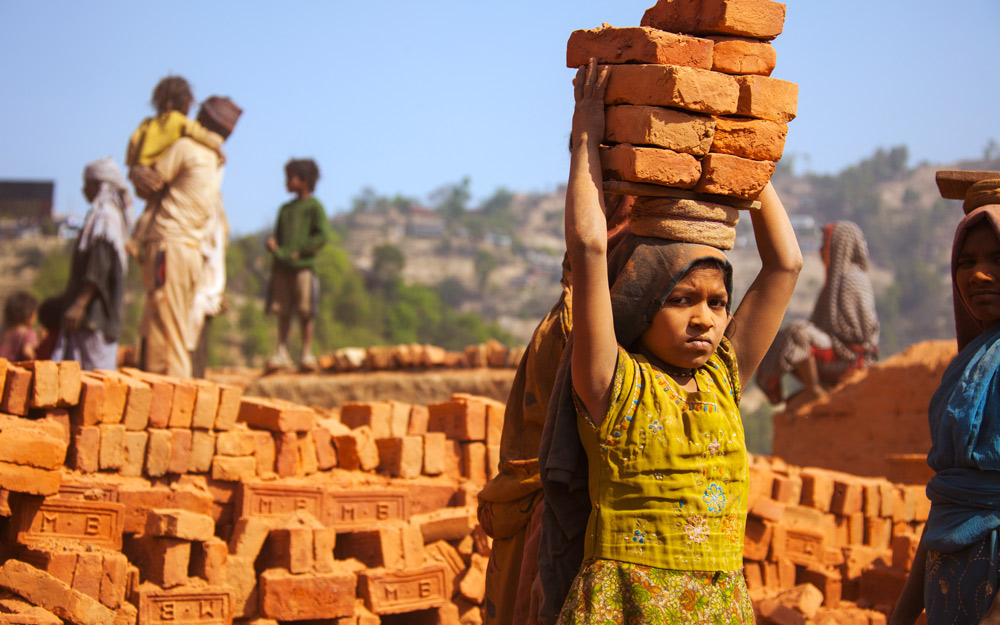
Burdened in Brick Kilns
A special report by Gospel for Asia (GFA) shared the results of an investigation into slave labor by the International Justice Mission (IJM). After IJM workers helped 260 people—including children forced into labor—escape from one brick factory, a father shared how he and his family were tricked into working there.
Instead of receiving the good salary they were promised, his trapped family worked 16 hours a day, seven days a week. Their employer denied them hospital visits for injuries sustained while mixing or forming the bricks. Children caught playing during work hours received a torrent of verbal abuse and beatings with a pipe.
According to an 86-page report by ILO, 56 percent of brick makers in Afghanistan are children.
One of those is 11-year-old Sima. She works 13 hours per day, six days a week. At the time of the report, she had already been working in brick kilns for five years. She has never attended school and is illiterate. Sima’s circumstances are typical of children laboring in brick kilns. Many begin working at the age of 5.
The report also explains the physical implication of “manual handling of heavy weights … long working hours with awkward posture [and] monotonous and repetitive work.” Child laborers in brick kilns have a high risk of developing health problems like musculo-skeletal issues, poor bone development and early-onset arthritis.
The ILO further observed that “the cost of child bonded labor is paid over a lifetime through the loss of health, education, and opportunities.”
These are only a few of the industries in which child labor continues to exist.
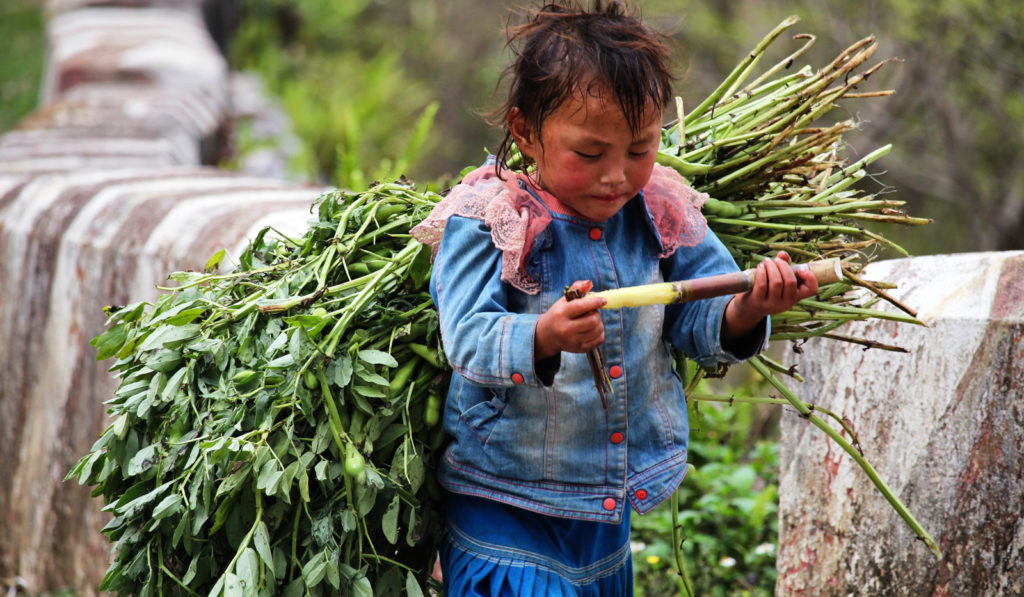
Why Are These Children Working?
Many children work to survive, but it is a combination of perverse incentives and unjust business practices that creates the demand for child labor.
The Families’ Context
Families caught in generational or situational abject poverty are desperate. Some are suffering from the social inequities of the culture in which they live. Others have been displaced by war or famine and have no source of income at all. Either of these exacerbates the situation.
In many cases, the parents are illiterate and have no skills, and whatever jobs they have pay very little. These families are so poor and often in so much debt that they are not likely to recover from either without enlisting their children as breadwinners. They can see no way out of their poverty, so they sacrifice the future (the education and success of their children) on the altar of the immediate (survival now).

Some poor families see artisanal mining and other occupations as their chance to rise above their poverty. In fact, families of children working in the cobalt mines of the DRC have proven to be strongly resistant to efforts to establish or enforce child labor laws, as doing so would eliminate a reliable source of family income.
That resistance is not uncommon. A single child working in cotton fields can contribute as much as a quarter of the family’s income. Why would a family want to give up 25 percent of their income when it is already nearly impossible for them to meet their family’s needs for food, clothing and shelter? Their focus is on staying alive.
Partly to blame for their decision to send their children to work is their lack of understanding of the world outside their limited geographic sphere. They have little or no concept of the profits being made at the end of the supply chains that are linked to their hands and feet.
Remember Lukasa? On a good day, he makes about $9 mining about 22 pounds of cobalt. That’s $0.41 per pound. The market price of cobalt reached $80,490 per metric ton in 2018. That is $36.52 per pound or 89 times what Lukasa makes. On a good day.
These people live in desperate circumstances. Losing income will only make matters worse.
The Employers’ Context
Employers are responsible for generating a reasonable return on shareholders’ investments. It’s all about profitability. No business can continually operate at a loss. The highly competitive nature of international trade is predicated on getting products to market quickly, efficiently and at the lowest prices possible for consumers. Each level of the supply chain, from the top down, pushes the entire chain to reduce costs. The key for each link is to acquire at the lowest possible cost and to sell at the highest cost the market will bear.
152 million
children are in forced child labor
When businesses throughout the chain fail to manage this dynamic, they go out of business. When they succeed, the two links at the far ends of the chain suffer the most. The first-touch laborers are destined to subsistence wages or less, and the consumers expend more for the final product. There are no winners at either end of the chain.
Many employers maximize their gain from production by employing low-cost labor. Children are the least expensive labor; they have little or no bargaining power, and they are easy to manipulate. Because of the desperate status of millions of families in developing countries, unscrupulous employers take advantage of their willingness—or force them—covertly or otherwise to minimize their costs.
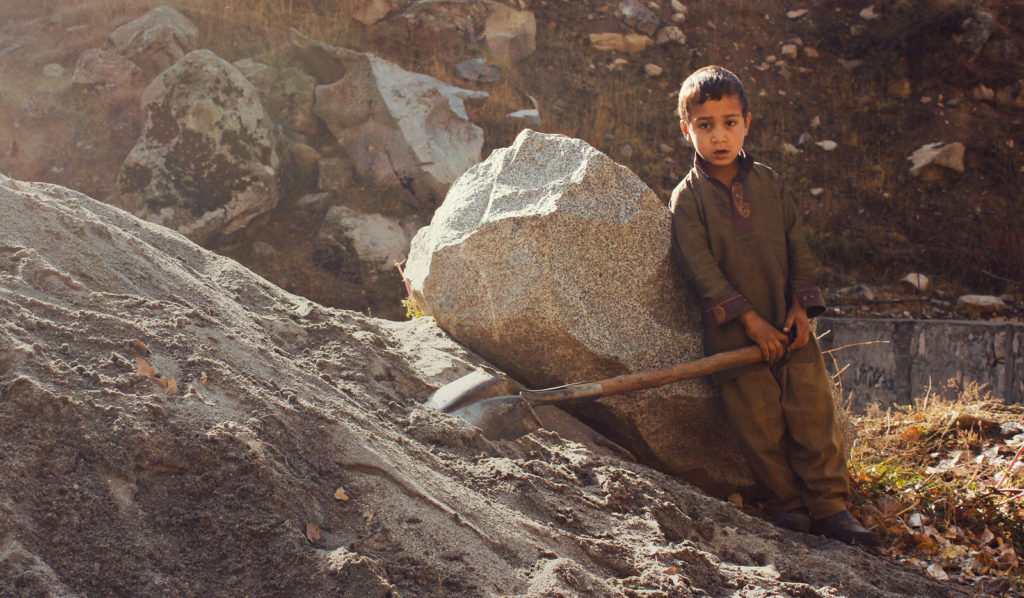
Other Obstacles to Ending Child Labour
Child labor is a well-known evil, and it is receiving global resistance. In Target 8.7 of the United Nations Sustainable Development Goals, member nations are obliged to take “immediate and effective measures to … secure the prohibition and elimination of the worst forms of child labor, including recruitment and use of child soldiers, and by 2025 end child labor in all its forms.”
UNICEF is the UN torchbearer for changing the cultural acceptance of child labor and offering “supporting strategies and programming to provide alternative income to families.” They expect to employ a multi-prong agenda, including legal reform; education; social protection; and access to health services in cooperation with other organizations, including corporate, governmental and NGOs, to accelerate child labor reduction in countries around the world.
Groups such as these are making headway in combatting child labor, but this global problem is not going down without a fight.
Obstacle 1: Lip Service
Maplecroft’s insights and analysis on Child Labor Index exposed the ease with which countries can and do pay lip service to the advancement of child labor eradication and other human rights. They simply sign a commitment that makes them acceptable in the sight of their peers but which they have no intention of keeping. For that reason, successful eradication of child labor may be predicated upon the ability to “differentiate between the states taking appropriate action to stop child labor and those that are just paying lip service.”
Obstacle 2: Intransigence
Intransigence is being discovered within all levels of both government and industry.
Pakistan has ratified the Convention on the Rights of the Child and enacted laws to deal with eliminating child labor. However, an investigation launched by Dawn News discovered that the departments responsible for implementing those laws showed little or no concern about doing so.
Article 11 of the Pakistan Constitution states, “No child below the age of fourteen years should be engaged in any factory or mine or any other hazardous employment.”
Nonetheless, the Dawn report revealed that around 1.5 million children were engaged in labor work across a single province. The laws have been written. They just aren’t enforced.
In June 2017, the International Labor Rights Union reported that not only is leading chocolate company Godiva not fully onboard with actively reducing the use of child labor, but it is “lagging furthest behind in their commitments and urgently needs an added push to improve.”
In yet another incident, Human Rights Watch reported in 2016 that by the order of local officials in Uzbekistan, classes were cancelled and children as young as 10 years old were removed from school and sent to pick cotton.
As these examples illustrate, economic results were considered more important than the morality of employing child labor.
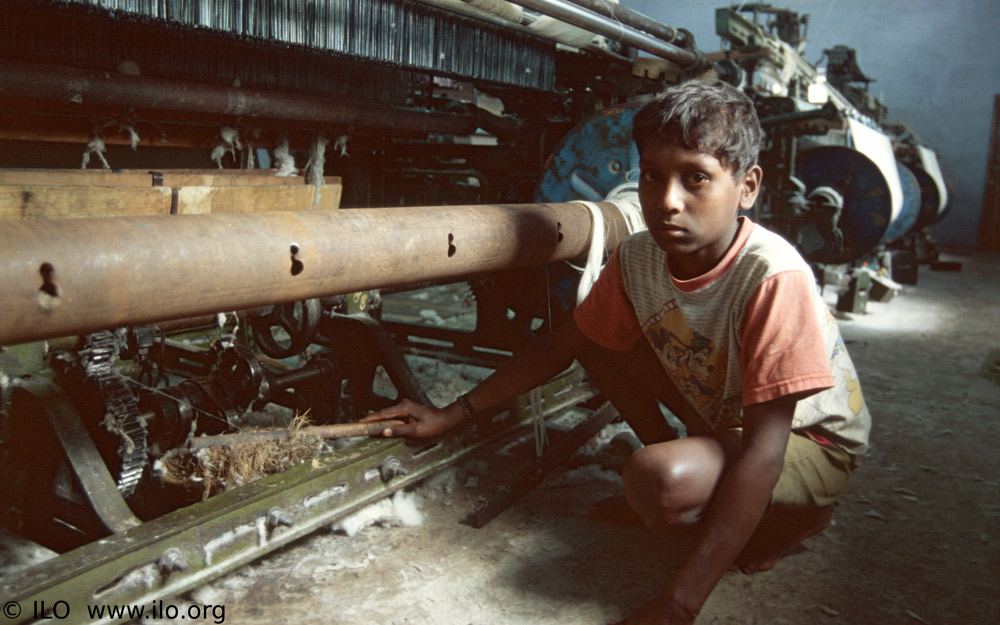
Obstacle 3: Limited Resources
Sometimes what looks like intransigence is simply a lack of resources.
Laws, regulations, mandates, goals, and agendas require resources to implement, monitor and enforce.
According to the Viet Nam News, “Vietnam was the first country in Asia and second country in the world to ratify the United Nations’ International Convention on the Rights of the Child.” Yet an estimated 1.75 million children are working in the nation. The labor inspectorate there is noted as “chronically underfunded and understaffed,” and if penalties are imposed, they often “amount to no more than a slap on the wrist.”
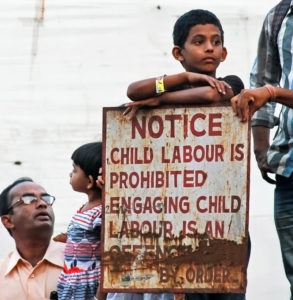
Tulane University professor William Bertrand has studied lofty aspirations, including federal and international mandates, and found that some—if not many—are “totally unachievable.” But it sure looks good on paper—especially to constituents.
From a corporate perspective, even if a company or entire industry budgets substantial financial outlays to prevent child exploitation as evidence of their “commitment”, that often does not reflect progress on the ground. One insider observed, “They talk a lot about the money spent on various activities related to child labor, but when we did the calculations, a fair proportion of that money was spent on sitting around and talking about it in London and Geneva.”
Funds spent on pontification in luxurious facilities have no effect on the places where they are most needed.
Included in the “most needed” is the ability to enforce laws where they exist.
Valiant Richey of the Organization for Security and Co-operation in Europe, told Reuters, “We can’t prosecute [cases of labor exploitation] fast enough. … The scope of the problem exceeds our ability to respond to it as law enforcement.”
250,000+
Krygyzstani children subjected to hazardous work
A 2018 study by the Kyrgyzstan Federation of Trade Unions (KFTU) found that implementing and enforcing are inconsistent at best. Although it had been 10 years since the country ratified the International Labor Organization convention for the elimination of the worst forms of child labor, more than 250,000 children were still subjected to hazardous work. The KFTU said the lack of ability to enforce the child labor laws is the greatest single obstacle to the elimination of child labor in the country.
Obstacle 4: Pushback
Unfortunately, this problem of pushback is as apparent in the United States as it is anywhere else in the world. In 2011, the Department of Labor (DOL) attempted to update the list of agricultural jobs dangerous for children under the Fair Labor Standards Act, but it was stymied by resistance from farm lobbying groups, including the American Farm Bureau.
The lobbying association reminded the DOL that “Farm Bureau advocates for the interests of farmers.” The powerful group is composed of farmers and related parties. Those delegates and their representatives seek to protect the farming industry, not to ban the employment of children on tobacco, cotton, or other farms. Farm lobbying groups say that restricting child workers in the agricultural industry threatens the fabric of American farms. Their position is that farms are generally family-run businesses. Evidence, however, suggests that child labor is more of a problem on large, industrially-operated endeavors.
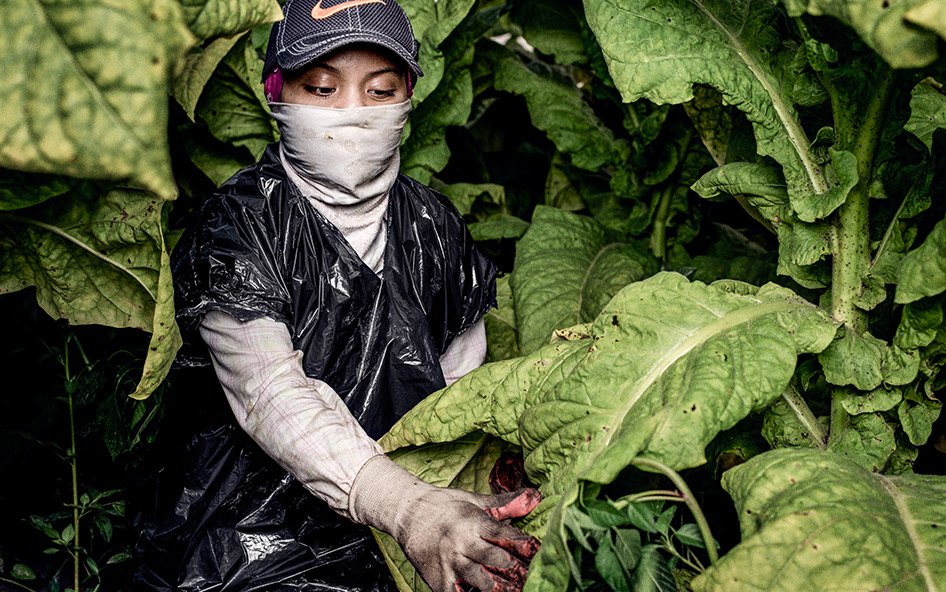
Once again, there is a subtle undertone in pushback that child labor helps the families of these children to have food, clothing, and shelter that would not be available otherwise.
When we understand that this is the nature of the beast in the United States, it should increase our awareness of the severity of pushback faced in developing countries.
Consider the case of Alternative Turkmenistan News (ATN) reporter Gaspar Matalaev. He is an investigative reporter working undercover to expose the state-run nature of forced and child labor during cotton harvests in Turkmenistan. Matalaev was arrested in 2016, two days after he published a report on the newspaper’s website about the state-orchestrated forced labor of children.
Refusal to contribute to the cotton harvest is considered insubordination, incitement to sabotage and contempt of the Turkmenistan homeland. Reporting on it is even worse.
Matalaev was tortured with electric shocks until he reportedly confessed to filing a fraudulent report. He remains imprisoned in a labor camp and is suffering from ill health as a result of the poor conditions.
There is pushback against attempts to eradicate child labor from the children and their families to the executive boardrooms, to the halls of humanitarian aid institutions, and to the highest national political offices.
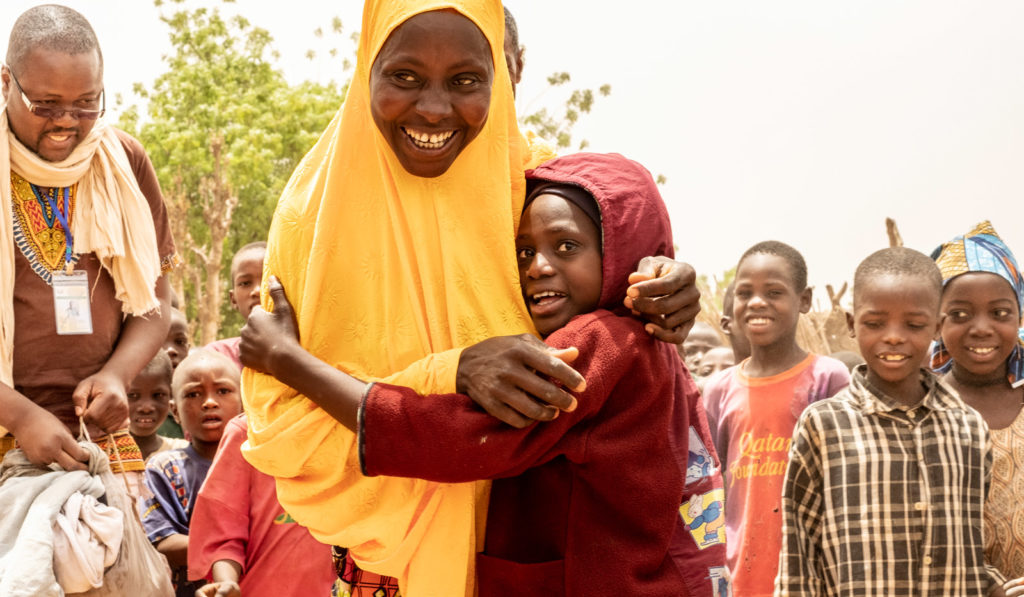
New Developments to End Child Labor
Supply Chain Enforcement
If this special report accomplishes nothing else, even though it is just the tip of the proverbial iceberg, it should make readers aware that every effort to eradicate child labor has failed. That is substantially the reason for the title being “Child Labor: Not Gone but Forgotten.”
Despite consistent failures, new proposals continue to be set forth. The two most recent propose supply chain management solutions.
A number of countries that are major importers, including the United States, have launched campaigns that place the onus on prohibiting the importation of products that have been produced using child labor and all forms of forced labor or debt bondage. The U.S. program is operated under the auspices of the U.S. Immigration and Customs Enforcement (ICE) Homeland Security Investigations (HSI) Forced Labor Program.
The results of the program thus far indicate that in FY 2017, ICE:
- Spent $12,682,597 investigating cases of international forced child labor.
- Spent $16,660,000 investigating cases of domestic forced child labor.
- Made 150 domestic and 66 international arrests related to forced child labor.
- Obtained 120 domestic and two international indictments related to forced child labor.
- Obtained 73 domestic and no international convictions related to forced child labor.
- Seized a total of $626,327 in assets from domestic and international investigations on forced child labor.
You do the math. Is there any better way to spend nearly $30 million to aid the cause of child labor?
Blockchain Enforcement
In an effort to combat forced labor, major corporations, including IBM, Ford and Coca Cola, are advocating the use of the current poster child of rapidly evolving technology: blockchain. It is a potentially effective means of ensuring that the products they market do not include child labor or any kind of forced labor from the beginning to the end of the entire supply chain process.
Blockchain proposes to be a secure and accurate digital ledger for recording assets, how and where they were obtained, and by whom.
Theoretically, companies would refuse to purchase from suppliers at any point in the supply chain who use child labor. All assets, locations and employees would be required to be “tagged” so they could be identified as a legitimate part of the supply chain. Miners like Lukasa and indentured fishermen like James Kofi Annan would not be able to work because they would not be registered in the blockchain.
Products sourced from conflict zones or that were created using child labor would not be able to enter the global market.
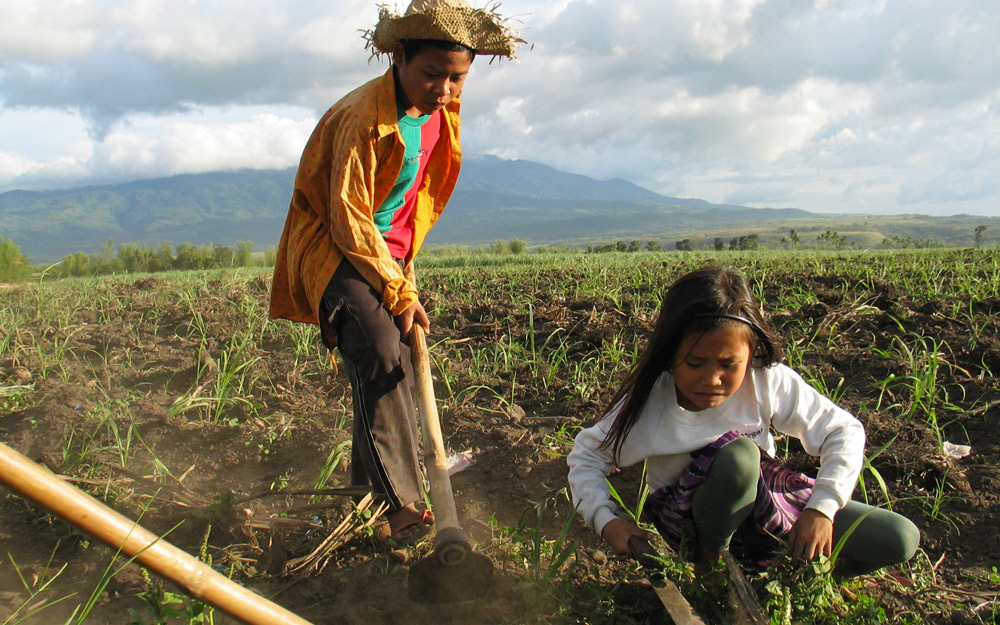
What Can We Do About Child Labor?
The answer to that question will depend upon who answers it. Well-meaning individuals from the philosophical to the practical will take positions on both sides of the argument of whether or not the practice of child labor can be eradicated. Even the philosophical and the practical will be divided in their opinions.
One thing we do know is that nothing has succeeded thus far. That does not bode well for future success.
But this report does not propose the eradication of child labor. Rather, it is intended to draw readers’ attention to its continuing existence. The issue of child labor is a Gordian Knot, the size of which cannot be cut even with the sword of Alexander the Great.
The problem of child labor is inexorably linked to the poverty that enslaves nearly half the world’s entire population. We must take God at His Word; Jesus reminded His disciples that there will always be people living in poverty (see John 12:8). When Jesus referred to the poor, He used a word that specifically describes people who are destitute, helpless and powerless.
Three billion people in the world live on less than the equivalent of $2.50 USD per day. More than 84 percent of those living in Sub-Saharan Africa live on less than $5.50 per day.
3 billion
people live on less than $2.50 USD per day
While various and sundry organizations and institutions attempt to solve the child labor problem, the church’s task remains what it has always been: Be the hands and feet of Jesus to “the least of these” (see Matthew 25:40).
The Lord never called us to eradicate either child labor or poverty. He will do that someday when He returns to earth to rule and reign. In the meantime, we are called to serve.
Ours is not a race to eradicate child labor. It is a journey to provide and care for those who are relegated to the lowest positions in life. Relentlessly ministering to the needs of “the least of these” is visible evidence of the love and grace of God in action.
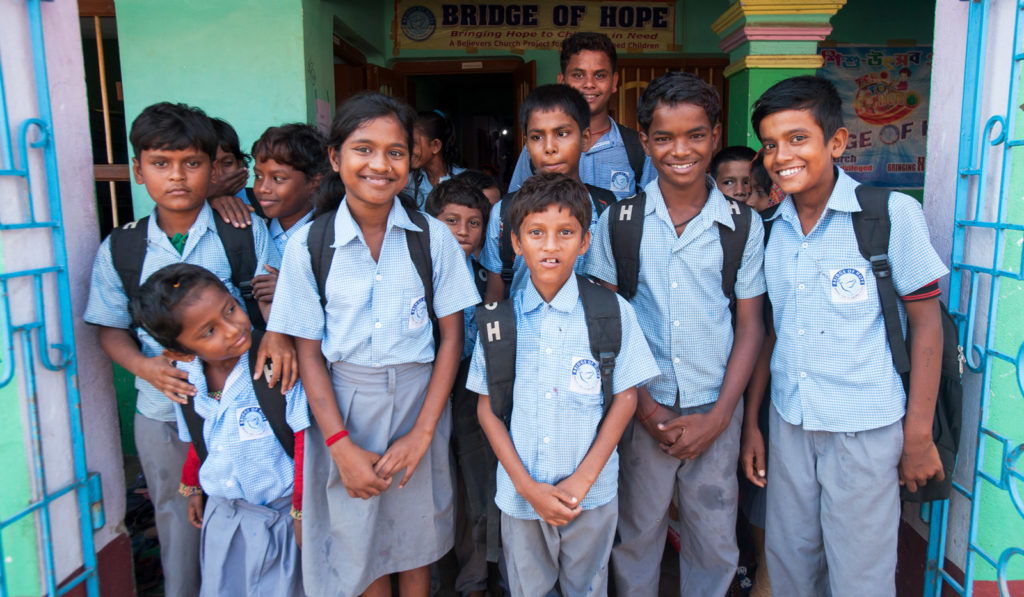
God’s Grace in Action at Gospel for Asia
For 40 years, the singular focus of Gospel for Asia (GFA) has been “to take the love of Christ to people who have never heard His name before.”
We must understand that Jesus looked upon people with such compassion that He made the lame to walk again and caused the blind to see. He didn’t just tell them that He loved them; He demonstrated His love in ways that changed their lives.
Representing Christ on earth requires that we demonstrate the same love and compassion that He did while He was here.
We are, from a heavenly perspective, blessed to be able to feed the hungry, tend to the sick and give a cup of cold water to the thirsty in Jesus’ name. These are people who know they have great needs. The Lord has granted us the high honor to love them and to serve them as His representatives. As He came to us as the “express image” of God the Father, so should we reach out to others in the express image of Jesus Christ (see Hebrews 1:3).
Poverty Alleviation
Poverty, as we have shown, is at the root of the child labor problem. Regardless of any other peripheral factors, poverty is always the driving force behind either willing or forced child labor. Therefore, much of Gospel for Asia’s work among the people of South Asia is related to rescuing families from the clutches of poverty.
Literacy and Vocational Education
The inability to read and write is a major hindrance that, unless addressed, becomes a generational curse. Illiterate people lack essential tools needed to rise above a subsistence-level existence. Furthermore, illiteracy leaves people in a position where others can easily take advantage of their situation, including entrapping them and their children in bonded labor.
Gospel for Asia’s field partners host literacy classes and vocational training classes for adults and youth, equipping them with skills that can break them out of the cycle of poverty. Gospel for Asia (GFA)-supported workers guide class members through an understanding of basic entrepreneurial skills to empower them to create a better future for themselves. In addition, gifts such as sewing machines, fishing nets and rickshaws are just a few of the income-generating resources distributed among families who are in dire need of an income.
Farm Animals
Gospel for Asia (GFA) sponsors around the world give generously to provide farm animals for families in rural Asian villages. Chickens, goats, and cattle produce products like eggs, milk and meat, which can be sold for a good price or used to feed the family. Breeding the animals also allows the owners to expand their businesses, continually increasing their incomes to better serve their families.
[masterslider id=”11″]Jesus Wells
Clean water is taken for granted by Westerners. However, in Africa and South Asia, women and children spend hours fetching water —not from a faucet, but from a ground source several hours away. In some cases, they must make the journey multiple times each day in order to meet their family’s needs.
By installing and maintaining Jesus Wells within poverty-stricken villages and communities, Gospel for Asia (GFA) provides a source of free clean water that can supply as many as 300 people with clean water for up to 20 years.
Not only do these people now have clean water, but it is also readily accessible. The women who fetched the water gain up to six hours a day that can now be used to obtain literacy and vocational training or to tend to their homes and children.
Bridge of Hope Centers
Children who formerly had to fetch water are now able to attend school, thereby avoiding the illiteracy and vocational poverty their parents and grandparents had suffered.
Enrollment in Gospel for Asia (GFA)-supported Bridge of Hope centers is offered freely to children whose parents commit to keeping their children in school. The Bridge of Hope Program is a continuation of the school day, in which the children received enhanced and advanced training.
GFA’s Bridge of Hope Program provides backpacks and school supplies, relieving students’ parents of the pressure of those expenses. Children also receive a nutritious meal each day and free health checkups. As they experience holistic growth through the program, students gain a vision for a life away from the cheap labor in brick kilns and factories—and they are equipped to fulfill that vision.
God’s Grace in Action Through You
None of Gospel for Asia’s efforts to free families from poverty and their children from child labor would be possible without people like you. The prayers and financial support of Gospel for Asia (GFA) friends drill wells; open Bridge of Hope centers; pay for literacy classes, vocational training and farm animals; and equip all of the ministries of national missionaries who are sharing Christ’s love through practical ways that change lives both now and for eternity.
We may never end child labor, but we must never forget it or those working to combat it—and we must remain relentless in being the only Jesus some will ever see.
To read more news on Child Labor on MissionsBox News, go here.
This Special Report article originally appeared on GFA.org.
Learn more about the children who find themselves discarded, orphaned and abused, and the home and hope that they can be given through agencies like Gospel for Asia.
For more information about this, click here.

